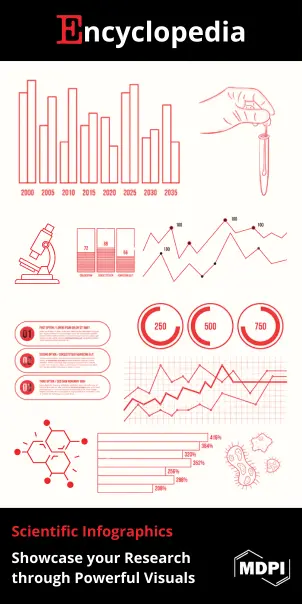
| Version | Summary | Created by | Modification | Content Size | Created at | Operation |
|---|---|---|---|---|---|---|
| 1 | Naveed Ahmed | -- | 1932 | 2022-06-30 06:32:51 | | | |
| 2 | Dean Liu | -1 word(s) | 1931 | 2022-07-01 02:28:05 | | |
Video Upload Options
In October 2021, a case of acute hepatic failure without any known cause was identified in the United States of America. Upon further investigation, other children aged 1–6 years were reported to have the same liver failure, and some of them were positive for adenovirus 41 type F. On 21 April 2022, the Centers for Disease Control and Prevention (CDC) released an alert after 74 cases were identified in United Kingdom (UK) between 5 and 8 April in children below 10 years of age, some of whom were also found to be positive for SARS-CoV-2. All the patients showed symptoms such as vomiting, diarrhea, jaundice, and abdominal pain. The patients’ liver enzymes were remarkably increased. A total of 650 cases had been reported from 33 countries as of 27 May 2022, among which 222 cases were reported in the UK alone. No connection with SARS-CoV-2 or its vaccine has been found so far.
1. Hepatitis
1.1. Pathophysiology of Viral Hepatitis
1.2. Severe Acute Hepatic Failure
1.3. Laboratory Assessment
2. Adenovirus
2.1. Adenovirus and Hepatitis
2.2. Adenovirus 41 Type F
3. SARS-CoV-2 and Hepatitis
References
- Musto, J.; Stanfield, D.; Ley, D.; Lucey, M.R.; Eickhoff, J.; Rice, J.P. Recovery and outcomes of patients denied early liver transplantation for severe alcohol-associated hepatitis. Hepatology 2022, 75, 104–114.
- Rivero-Juarez, A.; Frias, M.; Perez, A.B.; Pineda, J.A.; Reina, G.; Fuentes-Lopez, A.; Freyre-Carrillo, C.; Ramirez-Arellano, E.; Alados, J.C.; Rivero, A. Orthohepevirus C infection as an emerging cause of acute hepatitis in Spain: First report in Europe. J. Hepatol. 2022, 12, S0168-8278(22)00075-7.
- Zhou, X.; Song, X.; Wan, L. Epstein-Barr Virus Encephalitis and Disseminated Adenovirus Infection after Haploidentical Allogeneic Hematopoietic Stem Cell Transplantation for a Patient with Ph-Like Acute Lymphoblastic Leukemia. Case Rep. Oncol. 2022, 15, 245–250.
- Tüfekçi, Ö.; Özdemir, H.H.; Malbora, B.; Özbek, N.Y.; Yarali, N.; Erdem, A.; Evim, M.; Baytan, B.; Güneş, A.M.; Karapinar, T. Hepatitis-associated aplastic anemia: Etiology, clinical characteristics and outcome. J. Pediatric Hematol./Oncol. 2022, 44, e223–e226.
- Siva, N. Hunt begins for the cause of acute hepatitis cases. Lancet 2022, 399, 1765.
- Putra, J.; Ng, V.L.; Perez-Atayde, A.R. Pediatric Acute Liver Failure: A Clinicopathological Perspective. Pediatric Dev. Pathol. 2022, 10935266211067893.
- Jonsdottir, S.; Arnardottir, M.B.; Andresson, J.A.; Bjornsson, H.K.; Lund, S.H.; Bjornsson, E.S. Prevalence, clinical characteristics and outcomes of hypoxic hepatitis in critically ill patients. Scand. J. Gastroenterol. 2022, 57, 311–318.
- European Centre for Disease Prevention and Control. Rapid Risk Assessment: Increase in Severe Acute Hepatitis Cases of Unknown Aetiology in Children—28 April 2022. ECDC, Stockholm. Available online: https://www.ecdc.europa.eu/en/publications-data/increase-severe-acute-hepatitis-cases-unknown-aetiology-children (accessed on 29 April 2022).
- Office for National Statistics. Coronavirus (COVID-19) Infection Survey: Scotland; Office for National Statistics: London, UK, 2022. Available online: https://www.ons.gov.uk/peoplepopulationandcommunity/healthandsocialcare/conditionsanddiseases/datasets/covid19infectionsurveyscotland (accessed on 12 April 2022).
- Ghany, M.G.; Liang, T.J. Acute viral hepatitis. Yamada’s Textb. Gastroenterol. 2022, 1804–1840.
- Gu, J.; Su, Q.-Q.; Zuo, T.-T.; Chen, Y.-B. Adenovirus diseases: A systematic review and meta-analysis of 228 case reports. Infection 2021, 49, 1–13.
- Centers for Disease Control and Prevention (CDC). Recommendations for Adenovirus Testing and Reporting of Children with Acute Hepatitis of Unknown Etiology. 21 April 2022. Available online: https://emergency.cdc.gov/han/2022/han00462.asp (accessed on 25 April 2022).
- Aricò, M.; Caselli, D. Acute, Severe Hepatitis of Unknown Origin: Should We Really Be Afraid of Another Obscure Enemy of Our Children? Pediatric Rep. 2022, 14, 217–219.
- Hasham, K.; Ahmed, N.; Zeshan, B. Circulating microRNAs in oncogenic viral infections: Potential diagnostic biomarkers. SN Appl. Sci. 2020, 2, 442.
- AL-Bashar, S.H.; Badawy, A.S.; Mohammed, B.A.-R. Laboratory Diagnosis of Human Adenovirus associated with Respiratory Tract Infection in children. Tikrit J. Pure Sci. 2022, 27, 9–21.
- Mahase, E. Hepatitis in children: What’s behind the outbreaks? BMJ 2022, 377, o1067.
- Khalifa, A.; Andreias, L.; Velpari, S. Adenovirus Hepatitis in Immunocompetent Adults. J. Investig. Med. High Impact Case Rep. 2022, 10, 23247096221079192.
- Kujawski, S.A.; Lu, X.; Schneider, E.; Blythe, D.; Boktor, S.; Farrehi, J.; Haupt, T.; McBride, D.; Stephens, E.; Sakthivel, S.K. Outbreaks of adenovirus-associated respiratory illness on 5 college campuses in the United States, 2018–2019. Clin. Infect. Dis. 2021, 72, 1992–1999.
- Schaberg, K.B.; Kambham, N.; Sibley, R.K.; Higgins, J. Adenovirus hepatitis. Am. J. Surg. Pathol. 2017, 41, 810–819.
- Marsh, K.; Tayler, R.; Pollock, L.; Roy, K.; Lakha, F.; Ho, A.; Henderson, D.; Divala, T.; Currie, S.; Yirrell, D. Investigation into cases of hepatitis of unknown aetiology among young children, Scotland, 1 January 2022 to 12 April 2022. Eurosurveillance 2022, 27, 2200318.
- Christie, B. Scientists search for cause of hepatitis cases in children. BMJ 2022, 377, o982.
- Goetting, J.; Cordes, A.K.; Steinbrueck, L.; Heim, A. Molecular Phylogeny of human adenovirus type 41 lineages. bioRxiv 2022.
- Lee, B.; Damon, C.F.; Platts-Mills, J.A. Pediatric acute gastroenteritis due to adenovirus 40/41 in low-and middle-income countries. Curr. Opin. Infect. Dis. 2020, 33, 398.
- Slatter, M.A.; Read, S.; Taylor, C.E.; Crooks, B.N.; Abinun, M.; Flood, T.J.; Cant, A.J.; Wright, C.; Gennery, A.R. Adenovirus type F subtype 41 causing disseminated disease following bone marrow transplantation for immunodeficiency. J. Clin. Microbiol. 2005, 43, 1462–1464.
- Gaensbauer, J.T.; Lamb, M.; Calvimontes, D.M.; Asturias, E.J.; Kamidani, S.; Contreras-Roldan, I.L.; Dominguez, S.R.; Robinson, C.C.; Zacarias, A.; Berman, S. Identification of enteropathogens by multiplex PCR among rural and urban Guatemalan children with acute diarrhea. Am. J. Trop. Med. Hyg. 2019, 101, 534.
- Arowolo, K.O.; Ayolabi, C.I.; Lapinski, B.; Santos, J.S.; Raboni, S.M. Epidemiology of enteric viruses in children with gastroenteritis in Ogun State, Nigeria. J. Med. Virol. 2019, 91, 1022–1029.
- Pratte-Santos, R.; Miagostovich, M.P.; Fumian, T.M.; Maciel, E.L.; Martins, S.A.; Cassini, S.T.; Keller, R. High prevalence of enteric viruses associated with acute gastroenteritis in pediatric patients in a low-income area in Vitória, Southeastern Brazil. J. Med. Virol. 2019, 91, 744–750.
- Gelaw, A.; Pietsch, C.; Liebert, U.G. Genetic diversity of human adenovirus and human astrovirus in children with acute gastroenteritis in Northwest Ethiopia. Arch. Virol. 2019, 164, 2985–2993.
- Qiu, F.-Z.; Shen, X.-X.; Li, G.-X.; Zhao, L.; Chen, C.; Duan, S.-X.; Guo, J.-Y.; Zhao, M.-C.; Yan, T.-F.; Qi, J.-J. Adenovirus associated with acute diarrhea: A case-control study. BMC Infect. Dis. 2018, 18, 1–7.
- Kumthip, K.; Khamrin, P.; Ushijima, H.; Maneekarn, N. Enteric and non-enteric adenoviruses associated with acute gastroenteritis in pediatric patients in Thailand, 2011 to 2017. PLoS ONE 2019, 14, e0220263.
- Arashkia, A.; Bahrami, F.; Farsi, M.; Nejati, B.; Jalilvand, S.; Nateghian, A.; Rahbarimanesh, A.; Shoja, Z. Molecular analysis of human adenoviruses in hospitalized children < 5 years old with acute gastroenteritis in Tehran, Iran. J. Med. Virol. 2019, 91, 1930–1936.
- Jalilian, M. Viral Hepatitis and COVID-19: A Systematic Review on the Current Evidences. Govaresh 2022, 26, 184–194.
- Myers, V.; Saban, M.; Wilf-Miron, R. COVID-19 in children aged 5–11: Examining the issues surrounding vaccination and public health policy. Paediatr. Respir. Rev. 2022, S1526-0542(22)00031-8.
- Children and COVID-19: State-Level Data Report. American Academy of Pedeatrics. Available online: https://www.aap.org/en/pages/2019-novel-coronavirus-covid-19-infections/ (accessed on 16 June 2022).
- Molteni, E.; Sudre, C.H.; Canas, L.D.S.; Bhopal, S.S.; Hughes, R.C.; Chen, L.; Deng, J.; Murray, B.; Kerfoot, E.; Antonelli, M.; et al. Illness Characteristics of COVID-19 in Children Infected with the SARS-CoV-2 Delta Variant. Children 2022, 9, 652.
- Mücke, M.M.; Zeuzem, S. The recent outbreak of acute severe hepatitis in children of unknown origin—What is known so far. J. Hepatol. 2022, 77, 237–242.




